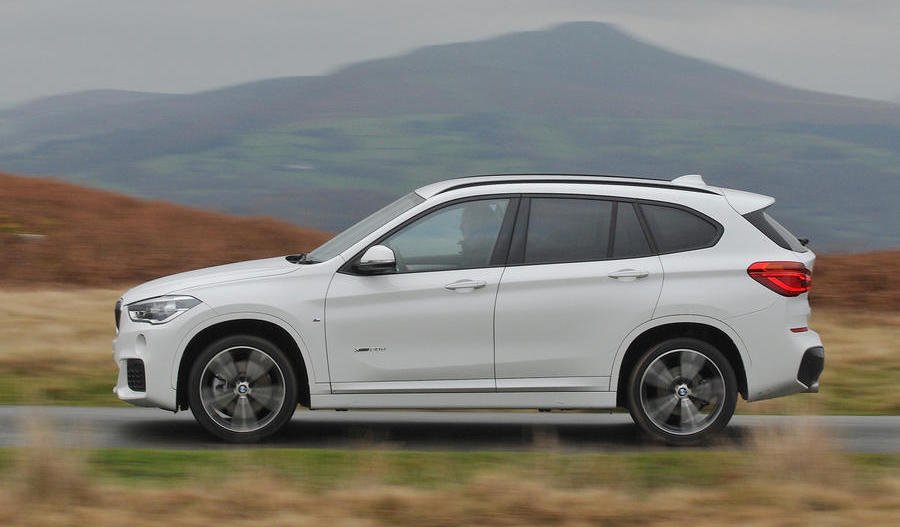Don’t confuse this second-generation BMW X1 with the rather lame first-generation model. The original sold well and introduced buyers to the concept of a mid-size BMW SUV, but it wasn’t very good.
This all-new 2015 model was quite different and much better. Unusually for a BMW it was front-wheel drive, but it had new engines, a new chassis and new technology inside.
Engine choices consisted of a range of turbocharged 2.0-litre four-cylinder units. Diesels included the 148bhp sDrive (front-wheel drive) and xDrive18d (four-wheel drive), the 187bhp xDrive20d and the 228bhp xDrive25d. Those who prefer petrol could opt for a 138bhp sDrive18i or a 189bhp sDrive20i or xDrive20i.
More expensive variants got an eight-speed automatic transmission and a choice of either front-wheel drive or part-time four-wheel drive, with torque sent to the rear wheels via an electrohydraulic clutch on the rear axle. The 217bhp plug-in hybrid xDrive25e arrived this year with an all-electric range of 35 miles, with BMW taking the opportunity to facelift the X1 and add a range of updates.
Across the line-up, entry-level SE trim has iDrive and a 6.5in multimedia system with sat-nav, DAB, a CD player, USB connectivity and Bluetooth streaming. Auto wipers and lights, 17in alloys, an automatic tailgate and rear parking sensors are also standard on SE.
Sport trim adds bigger alloys, a sporty bodykit and sports seats, while mid-level xLine trim is fitted with leather seats (heated at the front) and LED headlights. Range-topping M Sport gives your X1 an M Sport-themed interior, bodykit, alloys and suspension, and Alcantara-covered seats.
The driving experience also sets the second-gen X1 apart. Steering is precise and confidence-inspiring, and the handling is safe and predictable.
The Audi Q3, its main rival, generally has a better ride, but the X1 could be optioned with adaptive dampers that improve matters. Seek out a car so fitted if you can, but if not, stick with standard 17in wheels and Comfort suspension on SE-spec cars. Also, avoid the run-flat tyres.
Engine refinement is good but there’s a lot of road and wind noise on all versions. This becomes noticeable on motorway journeys in particular.
All the bits of interior trim you come into contact with inside the X1 are of a high quality, with switches and buttons exuding a satisfying feeling of solidity.
There’s plenty of space, too. Some examples were specified with an optional sliding rear bench, which can be moved forwards or backwards to help improve either boot space or rear passenger leg room. The boot itself is one of the biggest in the class – even without the sliding rear seats.
BUYER BEWARE
Electrics Some owners have complained of failures that involve non-engine electrics, including the DAB radio, the sat-nav and the entire infotainment system. Many have had to wait a long time for replacement parts and had to pay quite a lot of money in the process.
Gearbox If fitted with the automatic gearbox check for transmission error messages.
Suspension Listen for thumping noises over speed humps suggesting problems with the lower control arms or worn bushes. On models fitted with adaptive suspension, check all is well with the system.
Brakes Especially on xDrive models, check discs and pads have sufficient life remaining.
Interior Listen out for wind noise from the back windows or the sunroof, if fitted.
Need to know
Early, high-mileage X1s start at £10,000. A 2016 car will cost between £12,000 and £13,000, a 2017 is £14,500 to £16,000 and a 2018 £17,000 to £20,000. Spend £20k-£25k for a 2019 example.

